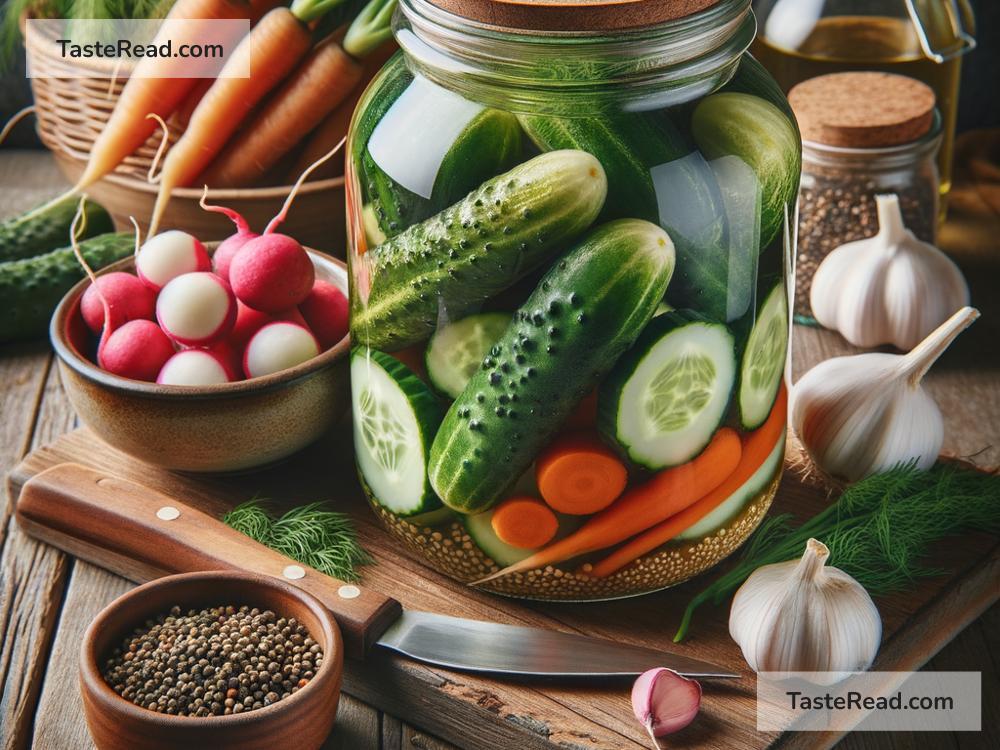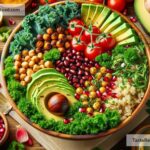The Science of Pickling: Preservation and Flavor
Pickling is one of the oldest methods humans have used to preserve food. It’s a fascinating process that combines science and flavor to create tasty and long-lasting foods like pickles, kimchi, sauerkraut, and more. But what’s really going on when we pickle food? Let’s break it down into simple terms and explore how pickling works, why it helps preserve food, and how it adds bold flavors we love.
What Does “Pickling” Mean?
Pickling is a way to preserve food by soaking it in a liquid solution, most commonly vinegar or a saltwater brine. The solution stops bacteria that cause food to rot and spoil, keeping the food safe to eat for weeks, months, or even longer.
Pickling also changes the flavor of the food dramatically! Through this process, fresh cucumbers transform into crunchy, tangy pickles, and cabbage becomes the bold, sour delight of sauerkraut.
The Science Behind Pickling
To understand why pickling works, we need to look at two key components: acid and salt.
1. Acid (Like Vinegar) Stops Bad Bacteria
Vinegar is acidic, meaning it has a low pH. Most bacteria and microorganisms that spoil food can’t survive in acidic environments. When you soak a vegetable in vinegar, the acid creates a hostile environment for harmful bacteria, making it hard for them to grow. This keeps the food fresh and safe for a longer time.
2. Salt and Fermentation
Sometimes pickling is done with salt instead of vinegar, using a technique called fermentation. Here’s how it works: Salt is added to the food and water, which pulls out the vegetable’s natural sugars. Good bacteria that thrive in salty environments (lactic acid bacteria) start eating these sugars and produce lactic acid as a byproduct. The lactic acid works like vinegar, lowering the pH and stopping harmful bacteria.
This process – fermentation – is what gives foods like kimchi and sauerkraut their intense, tangy, and complex flavors.
How Pickling Preserves Food
Pickling prevents food from spoiling by controlling the environment around it. Rot happens when bacteria grow on food, breaking it down and creating mold or funky smells. Pickling keeps these harmful bacteria from multiplying.
By using either vinegar or salt (or sometimes both), pickling creates conditions that are unfriendly to bad bacteria but perfect for preserving the food. That’s why jars of pickled cucumbers can stay fresh in the fridge for months but raw cucumbers spoil in just a few days.
Adding Flavor to Food Through Pickling
Preservation is only part of the story. Pickling also transforms the flavor of food in amazing ways.
Tanginess and Tartness
Pickled foods usually taste sour, tangy, or tart because of the acids involved. Whether it’s vinegar or lactic acid, these acids create the recognizable zing we associate with pickled treats.
Spices
Many recipes add spices to the pickling liquid. Dill, garlic, mustard seeds, bay leaves, and chili peppers are popular choices, depending on the culture and dish. These spices soak into the food during the pickling process, creating flavorful combinations that can be mild or bold.
Texture
Pickling can change the texture of food, making it crunchier or softer. For example, cucumbers become crispier when pickled, while cabbage becomes tender as it ferments into sauerkraut.
Types of Pickling
Pickling methods differ depending on the food and cultural background. Here are two common types of pickling:
Vinegar Pickling
This is the most straightforward method. Vegetables are soaked in a mixture of vinegar, water, salt, and sometimes sugar and spices. Since vinegar prevents harmful bacteria from growing, vinegar-pickled foods don’t need refrigeration as long as the jars are sealed properly (like the jars we find at grocery stores).
Fermented Pickling
This traditional method involves salt and fermentation instead of vinegar. Foods like kimchi, sauerkraut, and sour pickles rely on natural bacteria to create acid during the fermentation process. These foods often have bold, complex flavors and are considered probiotic (good for gut health because of the friendly bacteria).
Pickling Around the World
Pickling is practiced in cultures all over the world, each with unique ingredients and techniques.
- In Korea, kimchi is a staple made from pickled and fermented cabbage, radish, and spices.
- In Germany, sauerkraut is a beloved dish of fermented cabbage.
- In India, pickles (called “achar”) are made from mangoes, lemons, and other fruits, often mixed with spices like mustard seeds and chili.
- In the U.S., dill pickles are classic, often served with sandwiches or burgers.
How to Start Pickling at Home
Pickling is surprisingly easy to do at home! All you need are fresh ingredients, salt, vinegar, water, and spices. Start small by pickling cucumbers or carrots using vinegar. If you want to try fermentation, experiment with cabbage to make sauerkraut or kimchi. Just make sure to follow recipes closely, especially when measuring salt, for safety and flavor.
Final Thoughts
Pickling is a perfect blend of science and art. While it preserves food using acid or salt to protect against bacteria, it also creates bold, unique flavors that enhance our meals. From classic pickles to kimchi, this ancient practice continues to bring joy to tables around the world. Why not give it a try at home? You might be surprised how exciting and rewarding it is to pickle your own food!


